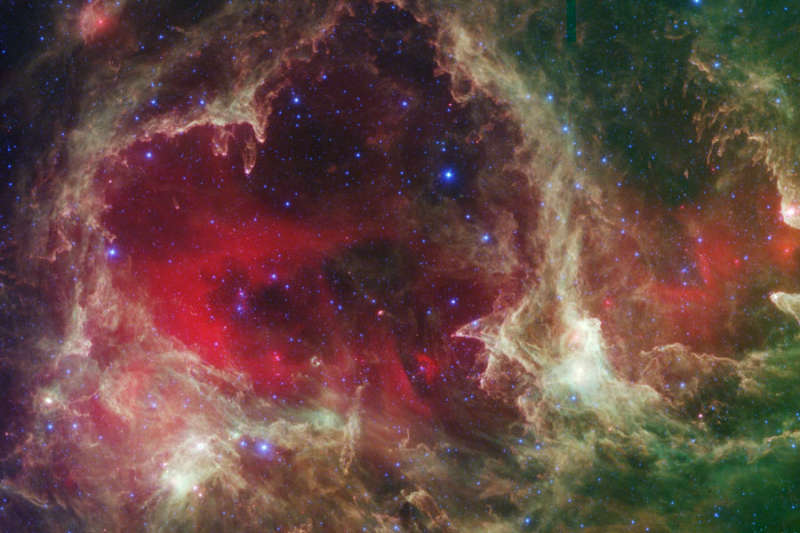W5: Pillars of Star Formation

Explanation:
How do stars form?
A study of star forming region
W5
by the sun-orbiting
Spitzer
Space Telescope provides clear clues by recording that massive stars near the
center of empty cavities are older than stars near the edges.
A likely reason for this is that the older stars in the center are actually
triggering
the formation of the younger edge stars.
The triggered
star formation
occurs when hot outflowing gas compresses cooler gas into
knots dense
enough to gravitationally contract into stars.
Spectacular pillars,
left slowly evaporating from the hot outflowing gas,
provide further
visual clues.
In the
above
scientifically-colored
infrared image, red indicates heated
dust, while white and green
indicate particularly dense gas clouds.
W5 is also known as
IC 1848, and
together with IC 1805
form a complex region of star formation popularly dubbed the
Heart
and
Soul Nebulas.
The
above
image highlights a part of W5 spanning about 2,000
light years that is rich in
star forming pillars.
W5 lies about 6,500 light years away toward the
constellation of
Cassiopeia.
Authors & editors:
Robert Nemiroff
(MTU) &
Jerry Bonnell
(USRA)
NASA Web Site Statements, Warnings,
and Disclaimers
NASA Official: Jay Norris.
Specific
rights apply.
A service of:
LHEA at
NASA /
GSFC
& Michigan Tech. U.

